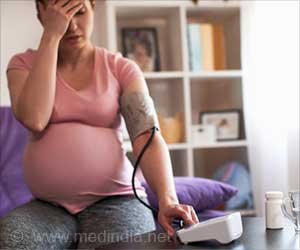Pre-eclampsia Or Pregnancy Induced Hypertension Escalates Aging

Delivery, the only available therapy, is not the cure it is often made out to be. “Even after delivery, women can have dangerously high blood pressure for many days or weeks,” Dr. Garovic says. “And they remain at an elevated risk for cardiovascular and kidney disease decades later”.
Her research is unraveling a potential mechanism behind pre-eclampsia that could lead to the first therapeutics designed to treat an underlying cause of the condition. It also highlights the importance of increased screening and treatment for women with a history of pre-eclampsia.
Advertisement
Elucidating the Mechanics Behind Pre-eclampsia
Most pre-eclampsia research is based on the premise that the disease arises within the placenta, the organ that materializes with each pregnancy to protect and nurture the developing baby.
Researchers believe that in pre-eclampsia, the placenta secretes molecules into the mother’s circulatory system that cause inflammation and interfere with the formation of new blood vessels, a process known as angiogenesis. They believe that these nefarious molecules cause systemic disease in the pregnant person. The goal has been to identify the molecule or molecules responsible, Dr. Garovic says.
For decades, researchers had noticed that placentas delivered from preeclamptic pregnancies often bore signs that they were aging faster than placentas delivered from normal pregnancies: “However, it was counterintuitive to say that pre-eclampsia was a disease of aging if you’re looking at somebody who’s 25 years old,” Dr. Garovic says.
In fact, many of the molecules that were elevated in preeclamptic pregnancies were well-known markers of senescence, a cellular state that literally means “the process of growing old.” Dr. Garovic theorized that senescence (aging-associated conditions) may be the pathway by which some women develop pre-eclampsia. Senescent cells stop dividing, but they do not die and are not always eliminated from the body. Instead, they sometimes accumulate in tissues and secrete harmful molecules.
Using samples and data from the Rochester Epidemiology Project, Dr. Garovic has tracked various signs of aging and senescence in women with and without preeclamptic pregnancies.
Together with Mayo Clinic obstetrician-gynecologists Wendy White, M.D., and Yvonne Butler Tobah, M.D., she found that women who have had pre-eclampsia have a greater number of chronic conditions later in lifeand develop these conditions at a much younger agethan those without a history of pre-eclampsia.
She also teamed up with Mayo Clinic cellular senescence experts James Kirkland, M.D., Ph.D., and Tamara Tchkonia, Ph.D., to show that women with pre-eclampsia undergo accelerated aging during pregnancy, as demonstrated by the “epigenetic clock”.
These epigenetic clocks enable researchers to calculate the biological aging of blood and other tissues by measuring the accumulation of methyl tagswhich shift over time in any given organismat hundreds of sites across the genome.
Dr. Garovic holds out hope that new medications being developed in the field of senescence may one day prove to be safe for use during pregnancy, providing more options to women at risk.
Reference :
- How preeclampsia accelerates aging in women – (https://discoverysedge.mayo.edu/2023/06/22/how-preeclampsia-accelerates-aging-in-women/)
Source: Eurekalert
Source link
#Preeclampsia #Pregnancy #Induced #Hypertension #Escalates #Aging



